Related Research Articles

Touring car racing is a motorsport road racing competition with heavily modified road-going cars. It is popular in Argentina, Australia, New Zealand, Brazil, Britain, Germany, Sweden and Denmark. It has both similarities to and significant differences from stock car racing, which is popular in the United States.

The Sandown 500 was an annual endurance motor race which was staged at the Sandown Raceway, near Melbourne, Victoria, Australia from 1964 to 2019. The event's name, distance – and the category of cars competing in it – has varied widely throughout its history. Most recently, the event was held as a championship event for Supercars from 2003 to 2007 and from 2012 to 2019.
The Australian Nations Cup Championship was a motor racing title sanctioned by the Confederation of Australian Motor Sport (CAMS) from 2000 to 2004.
The 2002 Bathurst 24 Hour was an endurance motor race staged at the Mount Panorama Circuit just outside Bathurst in New South Wales, Australia. The race, which was the first 24-hour event to be held at Mount Panorama, started at 4:00pm on 16 November and finished at 4:00pm on 17 November. It was the first 24 Hour race to be held in Australia since the 1954 Mount Druitt 24 Hours Road Race.
The 2003 Bathurst 24 Hour was a motor race staged at the Mount Panorama Circuit just outside Bathurst in New South Wales, Australia. The race started at 2:00pm on 22 November 2003 and finished at 2:00pm on 23 November. It was the second Bathurst 24 Hour.
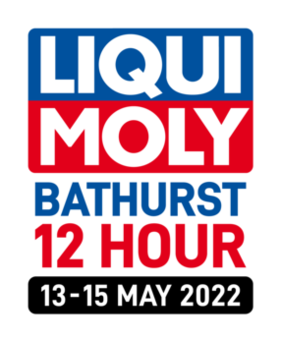
The Bathurst 12 Hour, currently known as the Liqui Moly Bathurst 12 Hour for sponsorship reasons, is an endurance race for GT and production cars held at the Mount Panorama Circuit, in Bathurst, Australia. It is an annual race, taking place every February. The race was first held in 1991 for Series Production cars and moved to Sydney's Eastern Creek Raceway in 1995 before being discontinued. The race was revived in 2007, again for production cars, before adding a new class for GT3 and other GT cars in 2011. This has led to unprecedented domestic and international exposure for the event. In all, eighteen races have taken place; seventeen at Mount Panorama and one at Eastern Creek Raceway.
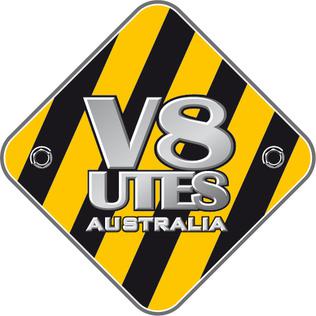
The V8 Ute Racing Series, known originally as the V8 BRute Utes was an Australian motor racing series for utilities, derived from the Australian Production Car Championship. It was conceived in 2000 by PROCAR chief Ross Palmer, V8 Ute Patron Ian McAlister and V8 Ute owner Craig Denyer and launched March 2001, as V8 Brute Utes, at the Clipsal 500 in Adelaide. The series was instantly popular, in part because of aggressive driving style of competitors, a style encouraged by the use of reverse grid racing, but also because of its very fan friendly marketing which included gimmicks like referring to each of its drivers by a nickname.
The 2000 Supercheap Auto GT Production Car 3 Hour Showroom Showdown was an endurance race for GT Production Cars The event was staged at the Mount Panorama Circuit, Bathurst, New South Wales, Australia on Saturday 19 November 2000 as a support event on program for the 2000 FAI 1000.

The Australian GT Championship is a CAMS-sanctioned national title for drivers of GT cars, held annually from 1960 to 1963, from 1982 to 1985 and from 2005. Each championship up to and including the 1963 title was contested over a single race and those after that year over a series of races. The categories which have contested the championship have not always been well defined and often have become a home for cars orphaned by category collapse or a sudden change in regulation.
John McIntyre is a New Zealand racecar driver who competes in the V8SuperTourer championship and is a co-driver for Ford Performance Racing in the V8 Supercar Series at Sandown and Bathurst.
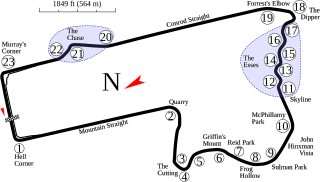
The Bathurst 24 Hour was an endurance race for GT and production cars held at the Mount Panorama Circuit in Bathurst, New South Wales in 2002 and 2003. Only two races were held before the collapse of the management organisation PROCAR. Both races were won by V8 Supercar team Garry Rogers Motorsport with Holden Monaros.
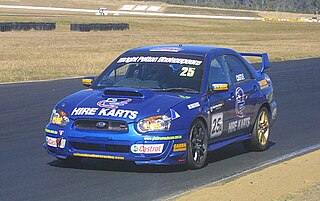
Group 3E Series Production Cars is an Australian motor racing formula for production based cars competing with limited modifications. Group 3E cars formerly contested the Australian Manufacturers' Championship and Australian Production Car Championship titles and compete in the annual Bathurst 12 Hour and Bathurst 6 Hour endurance races.
The 2004 Australian Nations Cup Championship was an Australian motor racing competition for modified production-based coupes complying with "Nations Cup" regulations. Contested as part of the 2004 Procar Championship Series, it was sanctioned by the Confederation of Australian Motor Sport as a National Championship with PROCAR Australia Pty Ltd appointed as the Category Manager.
Warren Luff, is best known as a race driver, stunt driver and driver training instructor. He is the son of well-known driver training instructor Ian Luff. He currently co-drives for Walkinshaw Andretti United in the Repco Supercars Championship with Bryce Fullwood in the No. 2 Holden ZB Commodore.

The 2011 Armor All Bathurst 12 Hour was an endurance race for FIA GT3 cars, Australian GT Championship cars, Group 3E Series Production Cars and other invited vehicles. The event, which was staged at the Mount Panorama Circuit, Bathurst, New South Wales, Australia on 6 February 2011, was the ninth running of the Bathurst 12 Hour, and the fifth since the race was revived in 2007.
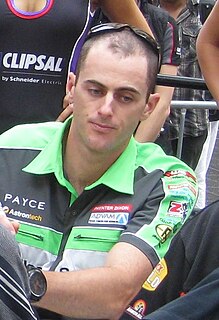
David Wall is an Australian racing driver competing in the Porsche Carrera Cup Australia Championship. He currently drives the No. 38 Porsche 911 GT3 Cup for Wall Racing.

The 2012 Armor All Bathurst 12 Hour was an endurance race for GT3 cars, GT4 cars, Group 3E Series Production Cars and Dubai 24 Hour cars. The event, which was staged at the Mount Panorama Circuit, near Bathurst, in New South Wales, Australia on 26 February 2012, was the tenth running of the Bathurst 12 Hour, and the sixth since the race was revived in 2007.

Nathan Pretty is an Australian racecar driver.

Andre Heimgartner is a New Zealand motor-racing driver who currently competes in the Repco Supercars Championship driving the No. 7 Ford Mustang GT for Kelly Grove Racing.

The Holden Monaro 427C was an Australian built and designed GT style race car based on the Holden Monaro CV8 road car. The car ran in the Procar Australia-run Australian Nations Cup Championship and at the short-lived Bathurst 24 Hour race at the famous Mount Panorama Circuit in Bathurst.
References
- ↑ Peter McKay, Crunch time for the series that add spice, www.smh.com.au Retrieved on 15 April 2015
- 1 2 PROCAR Australia ceases operations Retrieved from www.motorsport.com on 14 December 2009